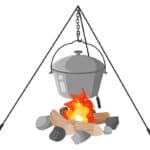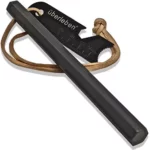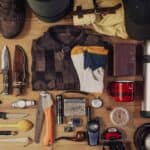In an unpredictable world, being prepared for emergencies is not just a smart choice—it’s a necessity. Whether you’re facing natural disasters, power outages, or unexpected situations, having the right survival gear and emergency kit can make all the difference. This comprehensive guide will walk you through everything you need to know about assembling and maintaining your essential survival gear and emergency kit.
Table of Contents
- Understanding Emergency Preparedness
- Core Components of a Basic Emergency Kit
- Advanced Survival Gear for Specific Scenarios
- Customizing Your Emergency Kit
- Food and Water Considerations
- First Aid and Medical Supplies
- Communication and Information
- Shelter and Warmth
- Personal Protection and Safety
- Tools and Multi-purpose Equipment
- Transportation and Navigation
- Financial Preparedness
- Maintaining and Updating Your Emergency Kit
- Emergency Kit Storage and Accessibility
- Training and Skills Development
- Conclusion
Understanding Emergency Preparedness
Emergency preparedness is the proactive approach to ensuring you and your loved ones can survive and thrive during unexpected situations. This includes having the right supplies, knowledge, and plans in place to handle various emergencies, from natural disasters to prolonged power outages.
Core Components of a Basic Emergency Kit
Every emergency kit should include these fundamental items:
- Water: One gallon per person per day for at least three days.
- Non-perishable food: At least a three-day supply.
- Battery-powered or hand-crank radio.
- Flashlight and extra batteries.
- First aid kit.
- Whistle to signal for help.
- Dust mask, plastic sheeting, and duct tape for shelter.
- Moist towelettes, garbage bags, and plastic ties for personal sanitation.
- Manual can opener and basic tools.
- Local maps and a fully charged cell phone with backup charger.
Advanced Survival Gear for Specific Scenarios
While a basic kit is essential, lightweight survival gear for minimalist backpackers can be crucial for those venturing into the wilderness. Consider adding:
- Multi-tools.
- Fire starters.
- Compact water filters.
- Lightweight shelter options.
For urban emergencies, include items like pry bars and gas shut-off tools. Don’t forget extreme weather gear such as cold weather clothing and heat packs for harsh climates.
Customizing Your Emergency Kit
Tailor your kit to your family’s specific needs:
- Account for family size and composition.
- Include special needs items like medications or infant supplies.
- Add pet food and supplies if you have animals.
- Consider climate-specific items based on your location.
Food and Water Considerations
Choose non-perishable foods that are nutritious and easy to prepare. Include:
- Canned goods.
- Dried foods.
- Energy bars.
- Powdered milk.
Don’t forget water purification methods such as tablets or portable filters, and proper water storage containers.
First Aid and Medical Supplies
A comprehensive first aid kit is crucial. Include:
- Bandages and gauze.
- Antiseptic wipes.
- Pain relievers.
- Prescription medications.
- Over-the-counter medications for common ailments.
Communication and Information
Prepare for communication challenges:
- Create an emergency contact list.
- Store important documents like insurance policies and identification.
- Include backup power sources for communication devices.
Shelter and Warmth
Be ready to create a safe, warm environment:
- Pack emergency blankets and sleeping bags.
- Include a tent or tarp for temporary shelter.
- Carry fire-starting materials like waterproof matches or a ferro rod.
Personal Protection and Safety
Don’t overlook personal safety:
- Consider self-defense items.
- Pack multiple emergency lighting options.
- Include personal protective equipment like gloves and goggles.
Tools and Multi-purpose Equipment
Versatile tools can be lifesavers:
- Quality knives and cutting tools.
- Rope and cordage.
- Duct tape and zip ties.
Be prepared for on-the-go emergencies:
- Create a vehicle emergency kit.
- Pack physical maps and a compass.
- Consider a portable GPS device.
Financial Preparedness
Don’t forget about financial emergencies:
- Keep emergency cash, including small bills.
- Store copies of important financial documents.
- Consider prepaid debit cards.
Maintaining and Updating Your Emergency Kit
Regular maintenance is key:
- Conduct inventory checks every six months.
- Replace expired food, water, and medications.
- Update your kit seasonally as needed.
Emergency Kit Storage and Accessibility
Strategic storage is crucial:
- Keep your main kit in an easily accessible home location.
- Prepare smaller kits for work and vehicles.
- Ensure all family members know where kits are stored.
Training and Skills Development
Gear is important, but so are skills:
- Learn basic first aid and CPR.
- Take emergency preparedness courses.
- Practice using your gear regularly.
Conclusion
Being prepared for emergencies is about more than just having the right gear—it’s about peace of mind. By following this guide and creating a personalized emergency kit supplies checklist, you’ll be ready to face whatever challenges come your way. Remember, the best emergency kit is the one you have when you need it, so start preparing today.
Take some time to assess your current preparedness level and begin assembling or updating your emergency kit. Share your own emergency preparedness tips with friends and family—because when it comes to survival, we’re all in this together.




















Leave a Reply